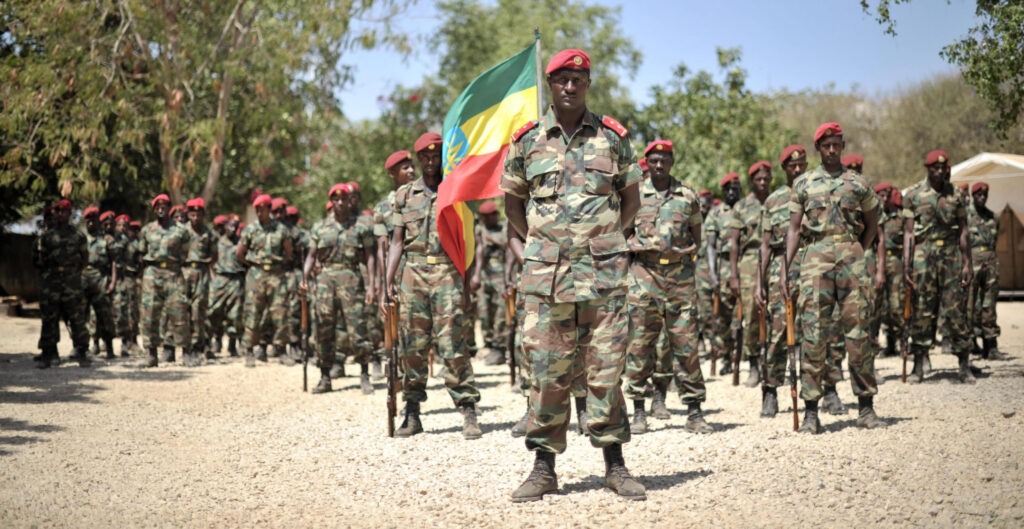
1.0 Introduction
As Ethiopia contends with tension in the Tigray region, increasing political competition from the Tigray People’s Liberation Front (TPLF), and an isolated peace framework from the Pretoria Agreement, is deflecting the Eastern Africa region’s effort for regional integration and a peaceful agenda. The aftermath of the civil war from 2020 to 2022 between TPLF and the Ethiopian Federal Government marked devastating impacts of the conflict and regional security threats to the Eastern African member states. Such developments have provoked negative responses, which could reignite new skirmishes between Ethiopia and Eritrea, leading to dire humanitarian conditions and destructive regional conflicts (International Crisis Group, 2025). For the warring factions, the Tigray region represents far more than a geographical feature; rather, it constitutes cultural identity, sovereignty, and economic robustness necessary for strategic alliances. According to the International Crisis Group (2025), the Pretoria Agreement captured the attention of the Eastern Africa region and international actors, routinely focusing on disarmament of the Tigrayan troops, cooperation in humanitarian access, and dissolution of the Mekelle offensive (International Crisis Group, 2025). This set the tone for the Ethiopian federal government to control the affairs of Tigray, vehemently contested by TPLF. In addition, the outcome of collaborative efforts by the Ethiopian federal government and TPLF exemplifies an omission challenge linked to Eritrea, which intensely exposes its prolonged occupation in Western Tigray despite global efforts to restore peace (CFR Global Conflict Tracker, 2025). This commentary assesses the role of preventive diplomacy; as a proactive approach to address the Ethiopia–TPLF crisis and examines the implications of delayed peace mechanisms on regional integration in the Eastern Africa region.
2.0 Key Issues
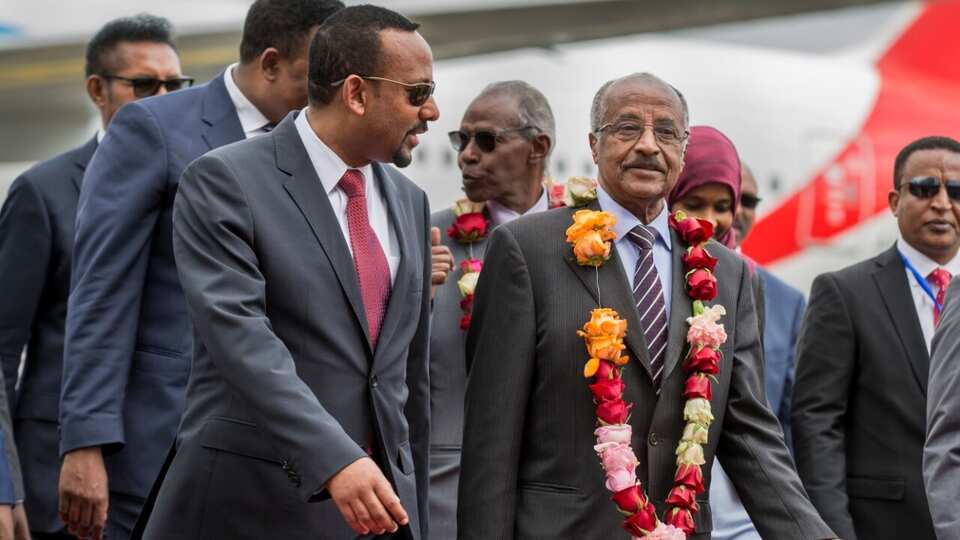
2.1 Diplomatic Institutional Gaps
Preventive diplomacy can avert wars but relies on timely, inclusive engagement. In Ethiopia, the 2020–2022 Tigray conflict revealed both its potential and its limits occasioned by diplomatic institutional gaps. To start with, the Pretoria Agreement reduced hostilities, created humanitarian corridors, and allowed limited access for relief agencies; but, estimates still indicate that between 162,000 and 600,000 deaths from violence, starvation, and lack of medical care (Stimson Center, 2025) continue to take place. Additionally, Ethiopia became the first recipient of AU Peace Fund in 2023 to sustain peace in the Tigray region, but poor enforcement of the Cessation of Hostilities Agreement (CoHA), weakened accountability and delayed transitional justice (AU,2023). Elite-driven diplomacy further hindered progress. To start with the 2018 Jeddah Pact excluded the TPLF and civil society organizations, prioritizing state-to-state optics over grassroots reconciliation. All this demonstrates the negative impact of institutional gaps in African and international mediation efforts, where failure to integrate local stakeholders and maintain oversight undermines durable peacebuilding, leaving populations vulnerable to renewed cycles of violence, instability, and humanitarian crises.
2.2 External Interference and Aid Disruption
The 17-point resolution in 2022, by the EU, US, and UK condemned the Tigray conflict and imposed arms embargoes on Eritrea and Ethiopia (Brendon, 2022). In response, Ethiopia deepened strategic ties with Russia and China, seeking protection from mounting international scrutiny. Both Moscow and Beijing blocked UN Security Council resolutions against the crisis, by framing the conflict as a domestic issue. This effectively hindered humanitarian access and external mediation support. Meanwhile, illicit trafficking in people, gold, and antiquities expanded, financing local elites and armed groups while destabilizing recovery prospects (The Sentry, 2025). These geopolitical maneuvers compounded civilian suffering, eroded trust in global institutions, and rendered preventive diplomacy fragile and manipulable. The convergence of blocked aid, weakened accountability, and entrenched economic crime underscores how international rivalries entrench cycles of violence. Without coordinated pressure and principled mediation, both regional stability and civilian protection remain acutely vulnerable to geopolitical manipulation.
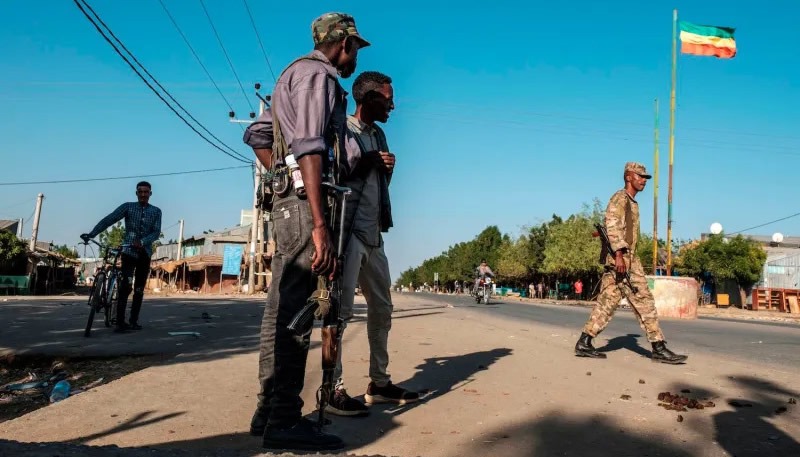
2.3 Fragile Peace Process and Internal Rift
The African Union’s 2024 strategic review of the Pretoria Agreement highlighted important milestones: cessation of hostilities, weapon handovers, and the establishment of an inclusive interim administration in Tigray to ease ethnic and political tensions. Essential services in Mekelle—including transport, utilities, education, banking, and agriculture—had been restored through African-led diplomacy (Heinrich Böll Stiftung, 2023). Despite these advances, it observed that critical elements remain incomplete. The DDR process is delayed, while Eritrean and Amhara forces continue occupying parts of Tigray, particularly Western zones, blocking IDP returns and undermining local security. Humanitarian aid suspension—including USAID and WFP funding totaling $1.8 billion. This has deepened the marginalization of displaced populations and weakened health, nutrition, and infrastructure recovery. While Pretoria’s initial gains offer hope, incomplete DDR, continued foreign troop presence, and stalled aid risk eroding public trust, threaten sustainable peace, and leave Tigray vulnerable to renewed conflict and political instability.
2.4 Maritime Constraints and Regional Diplomacy
Ethiopia, a landlocked country of approximately 135 million, faces strategic constraints amplified by Prime Minister Abiy’s description of it as a “geographic prison”. This has heightened tensions with Eritrea. The Grand Ethiopian Renaissance Dam exemplifies high-stakes interdependencies among Nile Basin states, linking water, energy, and regional diplomacy. Ethiopia’s maritime ambitions involve partnerships with Eritrea, Egypt, and Somalia, while port arrangements with Somaliland and Djibouti’s Tadjoura offer potential sea access. Somaliland’s lack of AU or UN recognition introduces legal and political complexities. These dynamics risk escalating regional friction, complicating preventive diplomacy as maritime competition intersects with domestic stabilization and long-term peacebuilding. Effective management requires law-based, cooperative, and transparent strategies that integrate maritime access within broader regional security frameworks, align with AU norms, and reinforce Ethiopia’s stability and Eastern Africa integration (Stimson Center, 2025).
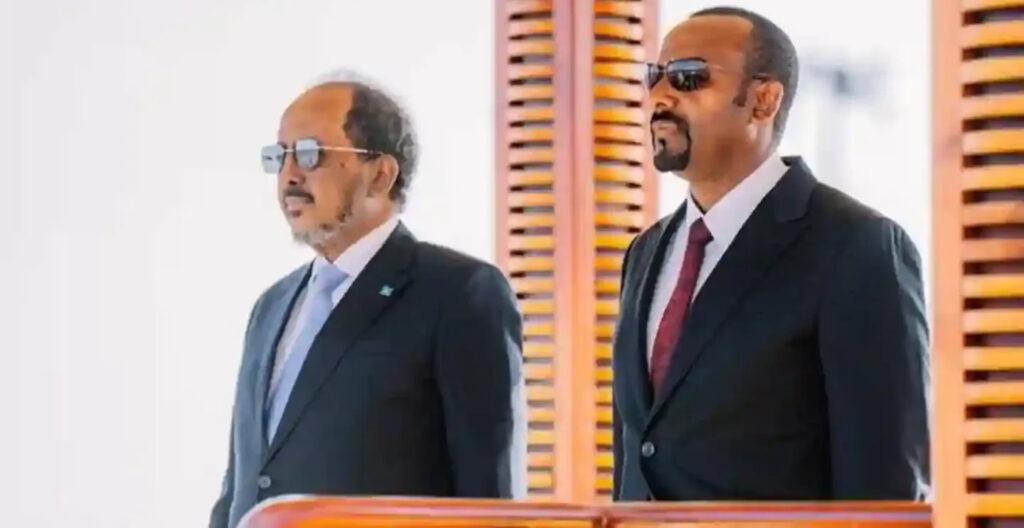
3.0 Conclusion
Preventive diplomacy, as a proactive approach to conflict prevention and resolution in the Ethiopia–TPLF crisis, remains fragile without a comprehensive, forward-looking architecture that integrates institutional, humanitarian, and geopolitical dimensions. Four interlinked challenges—fragmented diplomacy, external interference, uneven implementation of agreements, and geopolitical tensions surrounding maritime access—must be addressed simultaneously and systematically to prevent relapse. A revitalized peace infrastructure should fuse unified AU-led diplomacy, coordinated humanitarian interventions, robust monitoring and verification mechanisms, and inclusive regional economic integration to reinforce trust and accountability. Embedding TPLF, civil society actors, local authorities, and downstream nations within enforcement structures will enhance the legitimacy, ownership, and durability of peace efforts to finally resolve the conflict. Sustainable peace should not merely constitute a cessation of hostilities, but must be structured, actionable project of recovery, partnership, and long-term regional stability. Only by aligning preventive diplomacy across governance, humanitarian, and strategic layers can Ethiopia and the broader Eastern Africa region transform conflict legacies into resilient, inclusive, and enduring peace.
4.0 Policy Recommendations
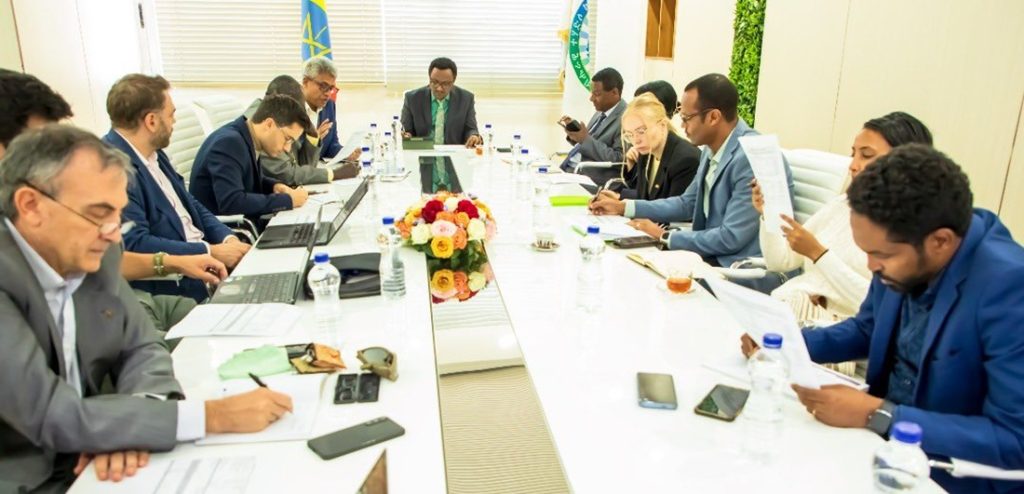
4.1 Unify Diplomatic Frameworks in building Institutions
Effective preventive diplomacy requires consolidating mediation under a singular AU-UN mechanism that enforces the Cessation of Hostilities Agreement (CoHA) and sustains DDR processes. Institutional resilience will highly depend on inclusive representation, integrating the TPLF, civil society, local actors, and regional stakeholders rather than limiting engagement to elite negotiation sessions. Embedding multilateral verification teams ensures accountability, monitors compliance, and prevents backsliding. Clear coordination among AU, IGAD, and UN technical bodies aligns mandates, reduces duplication, and preserves legitimacy. Strengthening internal institutions, promoting inclusive governance, and supporting transitional justice mechanisms consolidates domestic stability while boosting regional confidence. Together, these measures transform fragile agreements into durable peace frameworks, reinforce trust within communities, and establish conditions for sustained federal–Tigray reconciliation and Eastern Africa regional stability.
4.2 De-Risk External Interference by Coordinating Aid and Accountability
For preventive diplomacy to succeed, humanitarian aid must be integrated with political architecture through a coordinated AU-UN mechanism to reduce exposure to political interference and manipulation. Donor assistance should be channeled via multilateral platforms, ensuring continuity even amid embargoes or funding suspensions. A joint oversight board—including donor nations, AU, UN, and civil society—should safeguard delivery, monitor compliance, and prevent diversion. Concurrently, collaborative security intelligence should target illicit trafficking networks, linking enforcement with humanitarian logistics to protect aid pipelines. This alignment enhances the reliability of assistance, reinforces Ethiopia’s sovereignty, and neutralizes destabilizing external influences. By synchronizing accountability, aid, and security measures, preventive diplomacy infrastructure is strengthened, empowering domestic institutions and supporting stable, inclusive post-conflict recovery while deterring spoilers and fostering trust among affected communities.
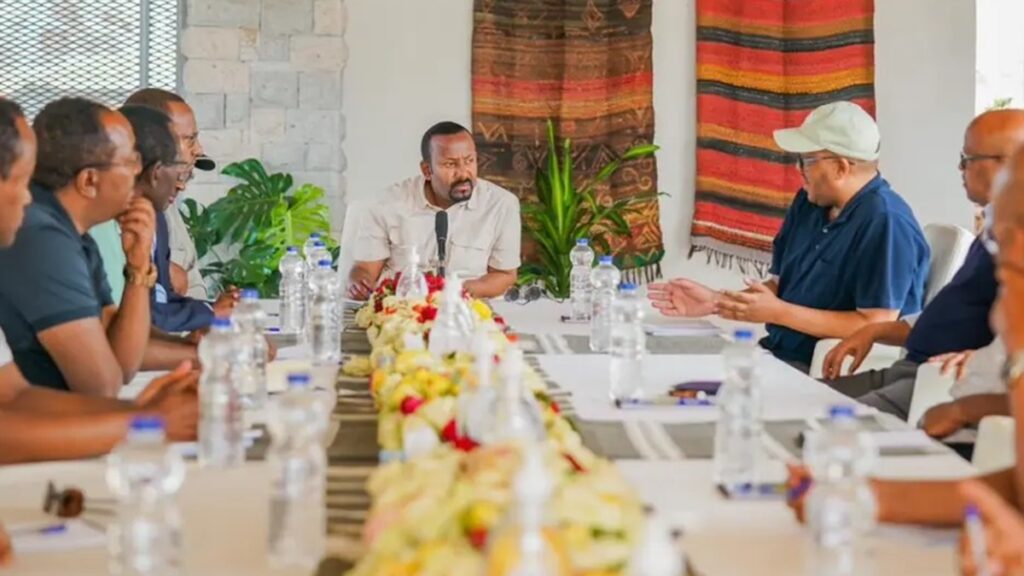
4.3 De-Escalate Tensions and Consolidate Peace Initiatives
Stabilizing the Pretoria Agreement outcome requires institutionalized monitoring missions jointly led by the AU-UN mechanism, tasked with tracking DDR implementation, withdrawal compliance of Eritrean and Amhara forces, and IDP reintegration. Community-based oversight through civil society enhances transparency and local ownership. Peace dividends must be tangible: donors should allocate earmarked funding for restoring essential services—health, education, and infrastructure—in Mekelle and surrounding areas. Embedding humanitarian safeguards within legally binding protocols will ensure continuity of services beyond political fluctuations. Visible progress empowers communities to uphold local stability, strengthens trust in federal authorities, and reinforces preventive diplomacy mechanisms. Coordinating monitoring, service delivery, and community engagement will transform fragile agreements into resilient peace frameworks, anchoring Pretoria’s gains within both grassroots and policy-level processes while reducing risks of relapse.
4.4 Reframe Maritime Frameworks for Regional Cooperation
Ethiopia’s maritime ambitious frameworks should be reframed as a collective regional asset within the AU diplomatic frameworks to reduce interstate tensions. Structuring multilateral port access agreements—such as Djibouti’s Tadjoura and Somaliland—under AU-backed joint governance models mitigates territorial rivalry and legal ambiguities. Establishing shared economic zones or joint port authorities will encourage trade integration, economic interdependence, and cooperative security. Harmonizing these maritime arrangements with GERD negotiations, cross-border infrastructure, and regional trade agendas will foster win-win solutions, balancing national and regional interests. This approach will transform Ethiopia’s geographic constraints from a strategic liability into a driver for Eastern Africa integration. Transparent, law-based agreements will reinforce confidence among neighbors, anchor maritime diplomacy within institutional frameworks, and reduce the risk of disputes undermining the Pretoria Agreement or broader preventive diplomacy objectives.
5.0 References
Brendon, J. C. (2022). Ethiopia in conflict: Shifting fronts, the role of external states and airpower. Trends Research. https://trendsresearch.org/insight/ethiopia-in-conflict-shifting-fronts-the-role-of-external-states-and-airpower/
Council on Foreign Relations. (2025). Conflict in Ethiopia. CFR Global Conflict Tracker. https://www.cfr.org/global-conflict-tracker/conflict/conflict-ethiopia
Heinrich Böll Stiftung. (2023). The Pretoria Agreement for Tigray: One year after. https://tr.boell.org/en/2023/11/01/pretoria-agreement-tigray-one-year-after
International Crisis Group. (2025). Turning the Pretoria deal into lasting peace in Ethiopia. https://www.crisisgroup.org/africa/ethiopia/turning-pretoria-deal-lasting-peace-ethiopia
Stimson Center. (2025). Tigray conflict death toll and humanitarian impact.
https://www.stimson.org/2025/preventing-starvation-crimes-lessons-learned-from-tigray/
African Union. (2023). African Union Commission Chairperson welcomes the signing of the AU/Ethiopia Grant Agreement to Sustaining Peace in the Tigray Region
https://au.int/en/pressreleases/20231228/african-union-commission-chairperson-welcomes-signing-auethiopia-grant
The Sentry. (2025). Eritrean leaders orchestrate industrial-scale looting in Tigray. https://thesentry.org/2025/06/30/80762/new-investigative-report-eritrean-leaders-orchestrated-industrial-scale-looting-operations-in-tigray-alongside-atrocities/
Worldometer. (2025). Ethiopia population.
https://www.worldometers.info/world-population/ethiopia-population/
